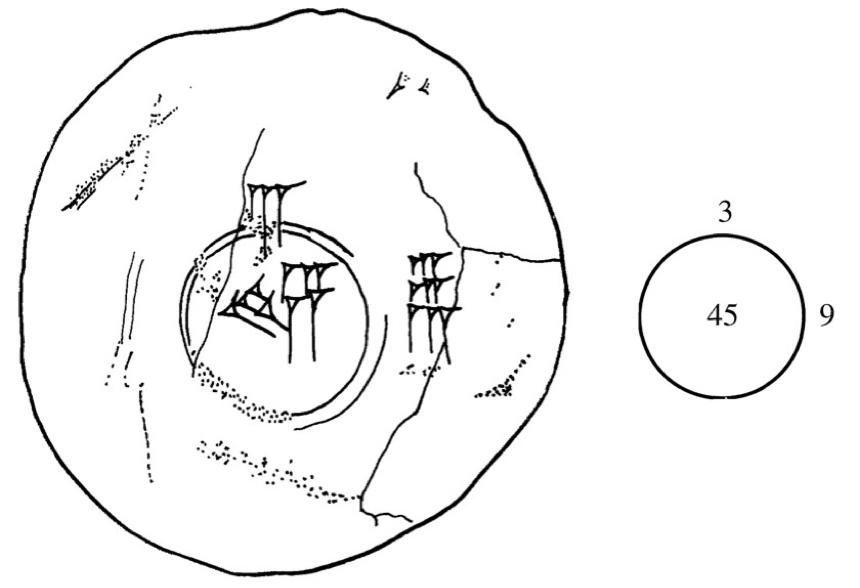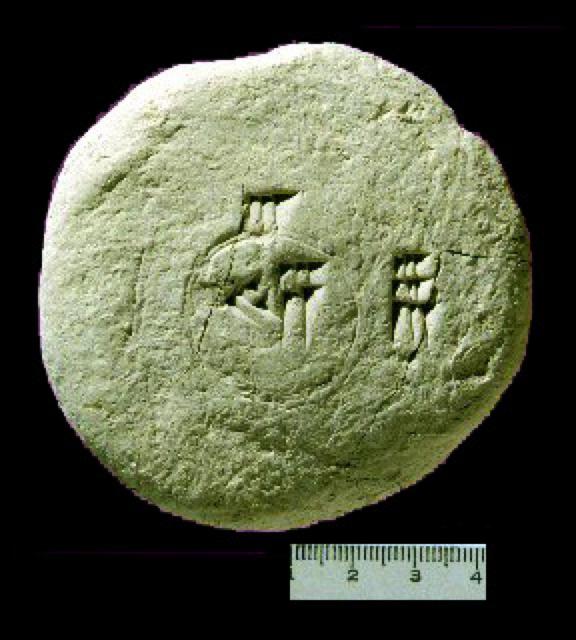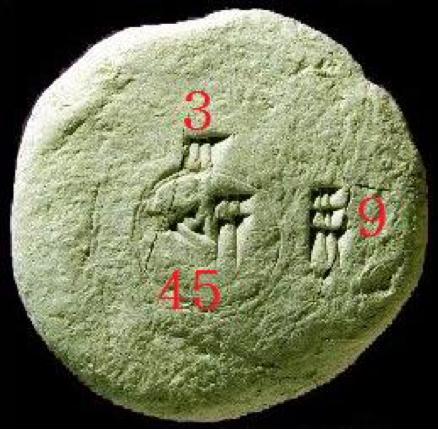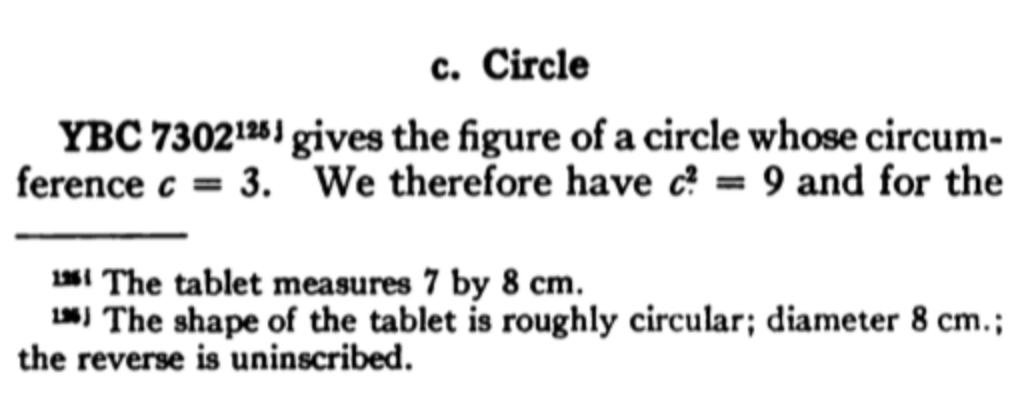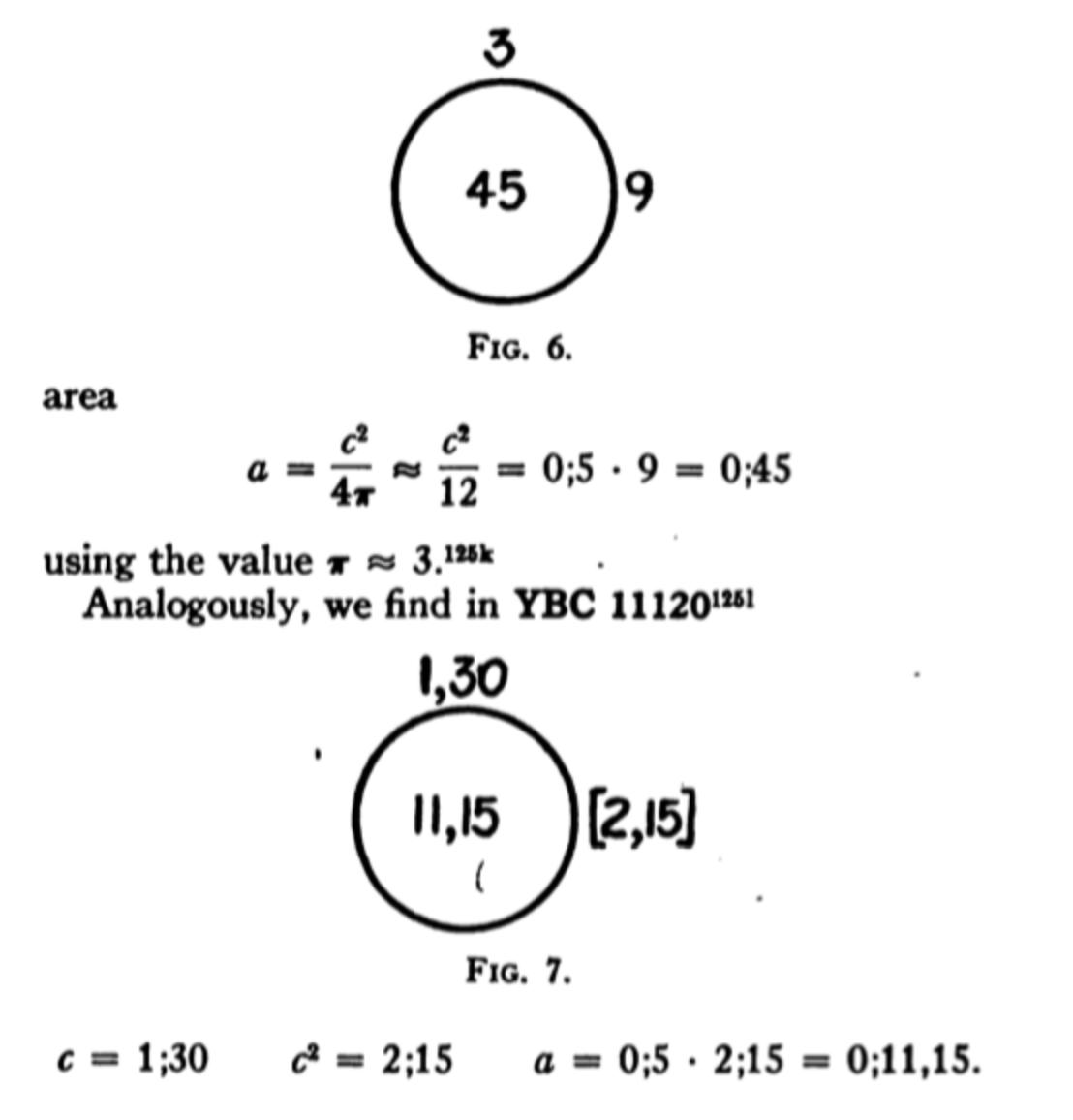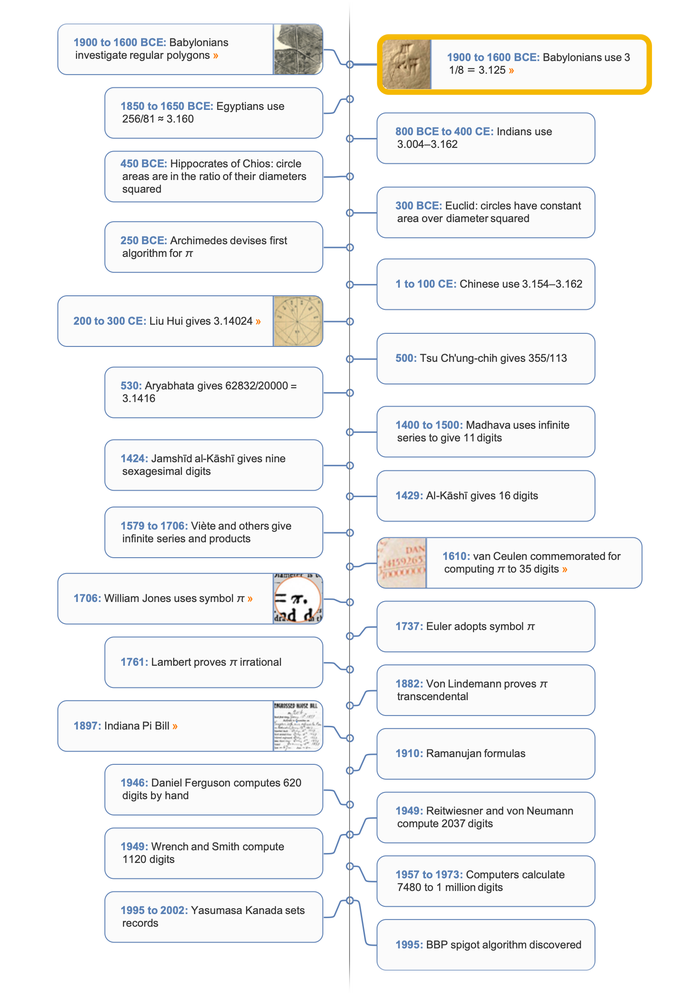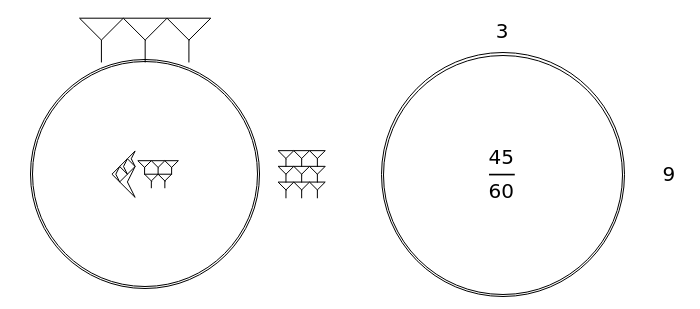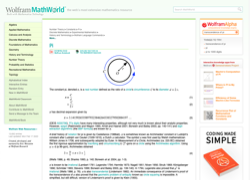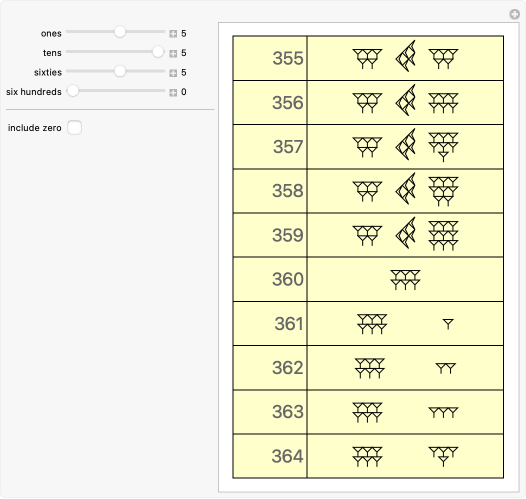around 1900–1600 BCE
Babylonian Circle Tablet
Babylonian approximation to π on annotated circle diagram
Babylonian tablet YBC 7302 from the Yale University collection contains a simple diagram of a circle together with three numbers written in cuneiform inside and around it. Simple inferences based on the location and values of the numbers suggest this tablet depicts a simple Babylonian approximation for π as 3.

This Babylonian tablet from around 1900–1600 BCE contains a drawing of a circle with the numbers 3, 9 and 45 inscribed in cuneiform in various positions in and around it. Based on the position of the number 3 just overlapping the top the circle, it seems to indicate a circumference C = 3. Similarly, the location of 45 in the center of the circle suggests it may be the area. While there is no obvious interpretation of the number 9 based on its location to the right of the circle, the fact that it is the square of 3 suggests it could represent the circumference squared.
